Well-being and the “Big How”
As we planned for this summer’s Think Tank we were mindful that the well-being construct has topped priorities exercises we have conducted with HERO members for the past two years. We knew there was little question about “what” we should be studying alongside our members in the coming year. Our Vice President of Research, Dr. Jessica Grossmeier, and I started using “the big how” as our short hand for an agenda that would challenge our Think Tank members to think bigger and, potentially, quite differently about methods we could use to bring substance and direction to the use of the well-being construct. Though well-being is a term long used in other fields, it is still in its nascent stages relative to applications in the workplace.
As we opened our sessions, I reviewed a dozen definitions of well-being in common use. Though most definitions are an assembly of well-being elements (social, financial, spiritual), I’ve been influenced by a few scholars who have argued that well-being should be an actionable term. Dodge, for example, says well-being happens “when individuals have the psychological, social and physical resources they need to meet a particular psychological, social and/or physical challenge.” I contrasted several such definitions and asked our participants whether they considered the concept a verb or a noun. Is it an independent variable to be manipulated or an outcome of interest such as a functional status measure? Similar to the table on “A Verb or a Noun” shown below, our members varied in their views with many arguing that it is both and some noting that they feel the elements aren’t that different from those in countless “wellness wheels” that have been around since the 1980’s.
(See also: Dodge R, Daly AP, Huyton J, Sanders LD. The challenge of defining wellbeing. Int J Wellbeing. 2012;2:222–235.)

HERO’s Research Update
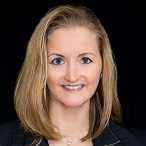 To further prepare our participants to think expansively about how HERO could uniquely contribute to this emerging field of study, Dr. Grossmeier offered a review of the impressive output of our study groups, research partners and consensus panels of recent years. You can access her HERO Research Update to review our growing publications C.V., and the methods and committee structures we have been using to produce evidence-based ideas for our members. Related to this, we have also developed a Committee Process document that provides more detailed guidance to our HERO study groups concerning timelines and deliverables that can realistically be achieved by volunteer committees.
To further prepare our participants to think expansively about how HERO could uniquely contribute to this emerging field of study, Dr. Grossmeier offered a review of the impressive output of our study groups, research partners and consensus panels of recent years. You can access her HERO Research Update to review our growing publications C.V., and the methods and committee structures we have been using to produce evidence-based ideas for our members. Related to this, we have also developed a Committee Process document that provides more detailed guidance to our HERO study groups concerning timelines and deliverables that can realistically be achieved by volunteer committees.
“Doing the Duh!”
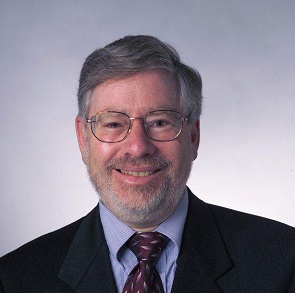
Our HERO Board of Directors Chair, Dr. Ron Goetzel from Truven Health Analytics and Johns Hopkins, welcomed Think Tank members with remarks about the HERO Board’s year-to-date long range planning. He related a story about when he described his work to a young friend: “We support people trying to quit smoking or maintain a healthy weight,” Ron explained, to which the friend replied, “Duh! Everyone knows that.” “Still,” Ron explained, “because there are so many environmental and cultural factors serving as barriers, our work is about doing the duh! There is a seismic change occurring in our world. Everyone here needs to be active change agents in dissemination of health and well-being.”
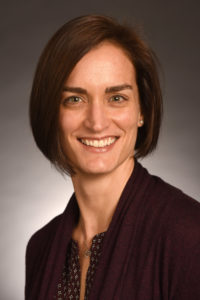 An “Escape Velocity” Event
An “Escape Velocity” Event
Dr. Carley Riley from Cincinnati Children’s Hospital and the Institute for Healthcare Improvement (IHI), sat down for a Think Tank chat with Dr. Grossmeier. I later told the two we wanted conversation starters, but their ideas were obviously felt by our audience to be those of fire starters. As a researcher for the IHI “100 Million Healthier Lives” (100MHL) campaign, Riley explained why this audacious goal was very intentionally large as to avoid being something that could be addressed via incremental change. Their metrics and convening meetings have now found their way to 100 communities and they hope to reach 1000 via their “distributive leadership style.” Riley often referred to the campaign as an “unprecedented collaboration” but she was also clear that collaboration without systems improvement and a continuous learning model could lead nowhere. “We can’t reach this size goal by moving things around,” Riley said.
If the system IHI envisions is built well, they hope to “fundamentally transform the way the world thinks and acts to improve health and well-being.” “Do the Duh” came to mind as I considered whether such transformation and “seismic changes in our world” are coincidental. Consider, for example, how often you’ve heard the notion that “we’re moving from wellness to well-being” as if the latter has some transcendent advantage or appeal over the former. To Riley, 100 million “healthier lives” will be those that are longer and have higher quality or well-being. Health is part of the equation, not something to be demoted. Explains Riley: “Well-being is a broader construct than health, with health as both a component of and a determinant of well-being. Health is necessary but not wholly sufficient to achieve well-being.” Riley and IHI are introducing “WALYs” as a metric that can capture the vital interactions between the time honored construct of life expectancy alongside their community efforts to advance well-being. How workplaces can contribute to WALYs seems like low hanging fruit for HERO.

I invited Riley for two reasons. First, the 100 million lives target can only be achieved through partnerships and, as anticipated, HERO members resonated with the “we don’t want attribution” model that IHI insists upon. Nico Pronk from HealthPartners said “we can treat 100 million healthier lives as our own.” Such enthusiastic adoption is precisely what Riley hoped for when she accepted our invitation. That’s the second reason I hoped she would work with us throughout the day. Riley is simply one of the smartest and most authentic leaders I have encountered this year and I was eager to have HERO get to know her as a resource and champion for well-being. She brings the thoughtful instincts of a researcher tempered by the pragmatic sensibilities of a physician. The strategy slide from 100MHL below conveys the “systems changes” and “innovative improvements” that Riley shares so openly and honestly. She seems as vulnerable as she does powerful when she embarks on the “deep listening” and “comfort with messiness” needed to partner with others to affect such transformative vision elements.

HERO has added our organizational name as a committed partner and enthusiastic contributor to the 100MHL initiative. We urge our HERO members to learn more about this visionary work of the Institute for Healthcare Improvement and consider joining us and them at: www.100mlives.org/join.
Best Practices and Lessons Learned on Drivers of Effective Collaborations
Our conversation starters for the afternoon were a panel of active HERO volunteers who, not coincidentally, are also some of our country’s most notable health promotion leaders. Following a morning focused on the exciting prospects for partnering and participatory research that Riley introduced, the afternoon was designed to turn the Think Tanks discussions toward applying the morning’s lessons about the “big how” to the challenge of advancing well-being. For the PowerPoint slides related to the following presentations, click here.
Dr. Ron Goetzel started our afternoon’s conversations with his assessment that “Think Tank members are lucky to be part of fun and joyful events.” He noted that our challenge will be to better translate the findings from our convening meetings and research into accessible communications. Scientists aren’t typically the best at dissemination, according to Goetzel, and the large group discussions that followed this panel came back often to the role HERO and our members can play in marketing the business case for health and well-being. Dr. Nico Pronk described how HERO’s “Employer and Community Connectivity” committee was working to advance the case for  businesses as active participants in community health initiatives. For many such case studies, visit HERO’s Healthy Workplaces, Healthy Communities website. Mirroring Riley’s call for equal partnerships in setting a community agenda, Pronk also advised that “instead of telling the community what it needs to do, have a conversation with them to find out what they want to accomplish and the best way to do it.” Pronk discussed the seminal work of scholar Thomas Kuhn who studied how new paradigms drive transformational change. “First there needs to be agreement that things are bad,” said Pronk. “Then there needs to be a replacement. 100MHL is a great example of this.”
businesses as active participants in community health initiatives. For many such case studies, visit HERO’s Healthy Workplaces, Healthy Communities website. Mirroring Riley’s call for equal partnerships in setting a community agenda, Pronk also advised that “instead of telling the community what it needs to do, have a conversation with them to find out what they want to accomplish and the best way to do it.” Pronk discussed the seminal work of scholar Thomas Kuhn who studied how new paradigms drive transformational change. “First there needs to be agreement that things are bad,” said Pronk. “Then there needs to be a replacement. 100MHL is a great example of this.”
 Chris Calitz from the American Heart Association believes HERO excels as a convener and has an opportunity to operationalize the concepts Riley presented. He used his colleague Laurie Whitsel, a HERO Board Member, as an example of someone who embraces the deep listening and genuine caring that Riley sees as vital to effective collaborations. Sue Willette
Chris Calitz from the American Heart Association believes HERO excels as a convener and has an opportunity to operationalize the concepts Riley presented. He used his colleague Laurie Whitsel, a HERO Board Member, as an example of someone who embraces the deep listening and genuine caring that Riley sees as vital to effective collaborations. Sue Willette 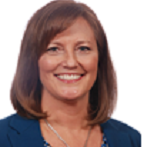 from Aon Hewitt, offered a poignant personal story of raising a son with special needs and how each individual and organization is special, yet share much in common. Willette shared data from an NBGH/Aon Hewitt Report demonstrating that stress remains a main barrier to employees achieving well-being. Generational differences will be an important consideration in designing health and well-being strategies according to Willette. This affirms the theme we are planning for the 2017 HERO Forum of “Engaging the Changing Workforce.”
from Aon Hewitt, offered a poignant personal story of raising a son with special needs and how each individual and organization is special, yet share much in common. Willette shared data from an NBGH/Aon Hewitt Report demonstrating that stress remains a main barrier to employees achieving well-being. Generational differences will be an important consideration in designing health and well-being strategies according to Willette. This affirms the theme we are planning for the 2017 HERO Forum of “Engaging the Changing Workforce.”
 In the large group discussion that followed this panel, the readiness for transformational approaches were apparent. Most emphasized the need to better communicate and disseminate research, stay on a positive psychology orientation versus a risk reduction paradigm, and use proven marketing methods to highlight the near term benefits of well-being. Dr. Tom Kottke, who has an extraordinary number of scholarly distinctions (one being that he was on the first expert panel for the U.S. Preventive Services Task Forces) linked the 100MHL challenge to the challenges of American businesses. “There are 323,000,000 people in the USA and 63% are working age,” explained Kottke. “HERO ought to continue to work radically changing the business view that successful business is extraction and in fact is instruction. Most leaders believe the pie is only so large and to be successful you need to take as much as you can. If HERO, through marketing, can change the psyche of American business that the pie can be made larger, there’s your revolution.”
In the large group discussion that followed this panel, the readiness for transformational approaches were apparent. Most emphasized the need to better communicate and disseminate research, stay on a positive psychology orientation versus a risk reduction paradigm, and use proven marketing methods to highlight the near term benefits of well-being. Dr. Tom Kottke, who has an extraordinary number of scholarly distinctions (one being that he was on the first expert panel for the U.S. Preventive Services Task Forces) linked the 100MHL challenge to the challenges of American businesses. “There are 323,000,000 people in the USA and 63% are working age,” explained Kottke. “HERO ought to continue to work radically changing the business view that successful business is extraction and in fact is instruction. Most leaders believe the pie is only so large and to be successful you need to take as much as you can. If HERO, through marketing, can change the psyche of American business that the pie can be made larger, there’s your revolution.”
HERO’s Role in Leading in Well-Being
Kicking off a closing panel, Dr. Carley Riley explained why well-being and sustainability are interrelated. Each community they work with will have its own well-being priorities and the 100MHL approach is to partner with communities that self-select their own path. The community defines what is meant by a healthier life and because IHI has a “measurement wizard,” they are able to assist in identifying drivers by measuring all of the elements being considered. Dr. Elizabeth Rula from Healthways noted that to achieve higher levels of population health, we need to achieve broader well-being. Rula showed how all well-being elements related to valued outcomes like performance and cost containment, and shared details of a study that showed where well-being measures out performed health risk assessment measures in predicting better health.
 When I looked for examples of the robust partnering that Riley described throughout the day, I most often referenced LuAnn Heinen from the National Business Group on Health (NBGH). As a collaborator in many of America’s population health improvement initiatives, Heinen explained how employers who achieve NBGH’s highest honors are those that are serious about metrics, open to peer review and rely on partners. She believes that return on investment is still important but that the interest in employees as an asset and the related interest in well-being is gaining ground. Dr. Thomas Kottke recently changed his title to Medical Director of Well-Being to align with his conviction that “medicine’s job is not just to ensure health and survival, but to enable well-being.” Kottke cited Corey Keyes’ well-being studies and noted that only 20% of Americans are “flourishing” with too many “languishing.” And while risks related to languishing are similar to those of depression, many more are languishing than are depressed. Kottke made comments throughout the day in support of his view that well-being is something more sought out, conceptually more positive and less apt to be met with resistance than has been the health paradigm.
When I looked for examples of the robust partnering that Riley described throughout the day, I most often referenced LuAnn Heinen from the National Business Group on Health (NBGH). As a collaborator in many of America’s population health improvement initiatives, Heinen explained how employers who achieve NBGH’s highest honors are those that are serious about metrics, open to peer review and rely on partners. She believes that return on investment is still important but that the interest in employees as an asset and the related interest in well-being is gaining ground. Dr. Thomas Kottke recently changed his title to Medical Director of Well-Being to align with his conviction that “medicine’s job is not just to ensure health and survival, but to enable well-being.” Kottke cited Corey Keyes’ well-being studies and noted that only 20% of Americans are “flourishing” with too many “languishing.” And while risks related to languishing are similar to those of depression, many more are languishing than are depressed. Kottke made comments throughout the day in support of his view that well-being is something more sought out, conceptually more positive and less apt to be met with resistance than has been the health paradigm.
The table topic discussions that ensued after this final panel surfaced questions and issues relating to how HERO members could be better translators of both the science and the paradigm shifts being presented by our experts. In particular, the impact of “social determinants” of health was felt to be a concept that employers would embrace if they had better and easier access to such information. Related to this, employees must also be a prime driver of transformations in our approaches. “Net Promoter Scores” (NPS) were referenced often as a metric that should more routinely accompany other assessments. Aon Hewitt discusses NPS in a recent report on Global Employee Engagement. Related to this, one of HERO’s strategic priorities discussed at the Board meeting that preceded Think Tank was that of increasing national use of individual level satisfaction surveys alongside that data we collect via the HERO Health & Well-being Best Practices Scorecard in collaboration with Mercer© (HERO Scorecard).
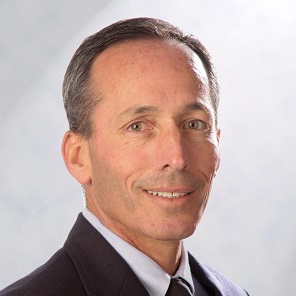 Seth Serxner from Optum and HERO Board’s Vice Chair, facilitated closing dialogue for this Research Think Tank. He reiterated the group’s interest in deeper collaboration and partnership, especially with other employers, other organizations and in a way that better engaged employees. He suggested HERO sponsor a webinar on NPS, something I’ll definitely plan to put on our Wednesday Webinars agenda in the coming months. Serxner noted how Goetzel’s “Do the Duh” idea will not need much more analysis, but will require expertise on the theme that trended throughout the day: intentional collaboration. In particular, Serxner recalled the discussion during the day that much of this will be “self-directed by organizations and individuals.” On this point, Dr. Riley cited the time honored observation that “when there can’t be collaboration there can be coordination. And if we can’t do coordination, we can do cooperation.” Riley went on to note that “if we can’t find a way to work together deeply, that may be ok, but can we coordinate? And if not, can we at least be aware of each other so we don’t undermine each other?”
Seth Serxner from Optum and HERO Board’s Vice Chair, facilitated closing dialogue for this Research Think Tank. He reiterated the group’s interest in deeper collaboration and partnership, especially with other employers, other organizations and in a way that better engaged employees. He suggested HERO sponsor a webinar on NPS, something I’ll definitely plan to put on our Wednesday Webinars agenda in the coming months. Serxner noted how Goetzel’s “Do the Duh” idea will not need much more analysis, but will require expertise on the theme that trended throughout the day: intentional collaboration. In particular, Serxner recalled the discussion during the day that much of this will be “self-directed by organizations and individuals.” On this point, Dr. Riley cited the time honored observation that “when there can’t be collaboration there can be coordination. And if we can’t do coordination, we can do cooperation.” Riley went on to note that “if we can’t find a way to work together deeply, that may be ok, but can we coordinate? And if not, can we at least be aware of each other so we don’t undermine each other?”
I closed our sessions with some informal polling of members about the future of our Research Think Tank and tested questions related to the group’s comments about the difference between sharing research findings and disseminating our learnings via marketing and creative messaging. There was remarkable variation in opinions among our members. Many favored a much more inclusive approach that would make research discussions more accessible to non-researcher members. They were influenced, I’m sure, by Riley’s eloquent descriptions about the principles of participatory research where everyone is an equal partner in creating the research agenda. Still, there were many members who cautioned that a research agenda requires focus, discipline and a unique skill set to execute. Also true. Like most things, my take is that the wisdom is in the middle. Watch for future Think Tanks that attempt to preserve the best of inclusiveness and participatory spirit while offering ample opportunities for the research geeks to flex their methodology muscles.
HERO’s Big Goals
As would be expected, when we framed much of the day around 100 Million Healthier Lives as an exemplary approach to partnerships, there were several questions and comments during the day about HERO’s big goals. We’re glad you’re asking! Last year, the Board substantially revised our vision. Where in the past HERO’s goal was essentially “to advance best practices in employee health management,” our new vision is that “all workplaces will positively influence the health and well-being of employees, families and communities.” The words “all,” “well-being” and “families and communities” all signal the Board’s anticipation of Goetzel’s “Seismic Changes” and Riley’s “Transformation.” Still, we need to put more details behind such a grand vision, and that’s what I’m presently working on with the HERO Board. I will have a full draft for their review this fall. Presently, there are several big, audacious elements to our plan that are conceptually quite simple but far from easy. Where in the past HERO has been known for framing the rules of the game (our metrics guides) and helping people keep score during the game (the HERO Scorecard), our new plan is to be game changers. Our big dream is to increase the number of companies who use the HERO Scorecard to track a cohort over time, but also to effect positive changes in their scores. That is, we want HERO to play a big role in the number of companies in America who are improving their use of strategic planning in health and well-being, increasing employee engagement and, due to this, improving health and well-being outcomes for employees, families and communities. To do this would mean that we’re full partners with Riley and many others who share a vision of 100HML in America.
